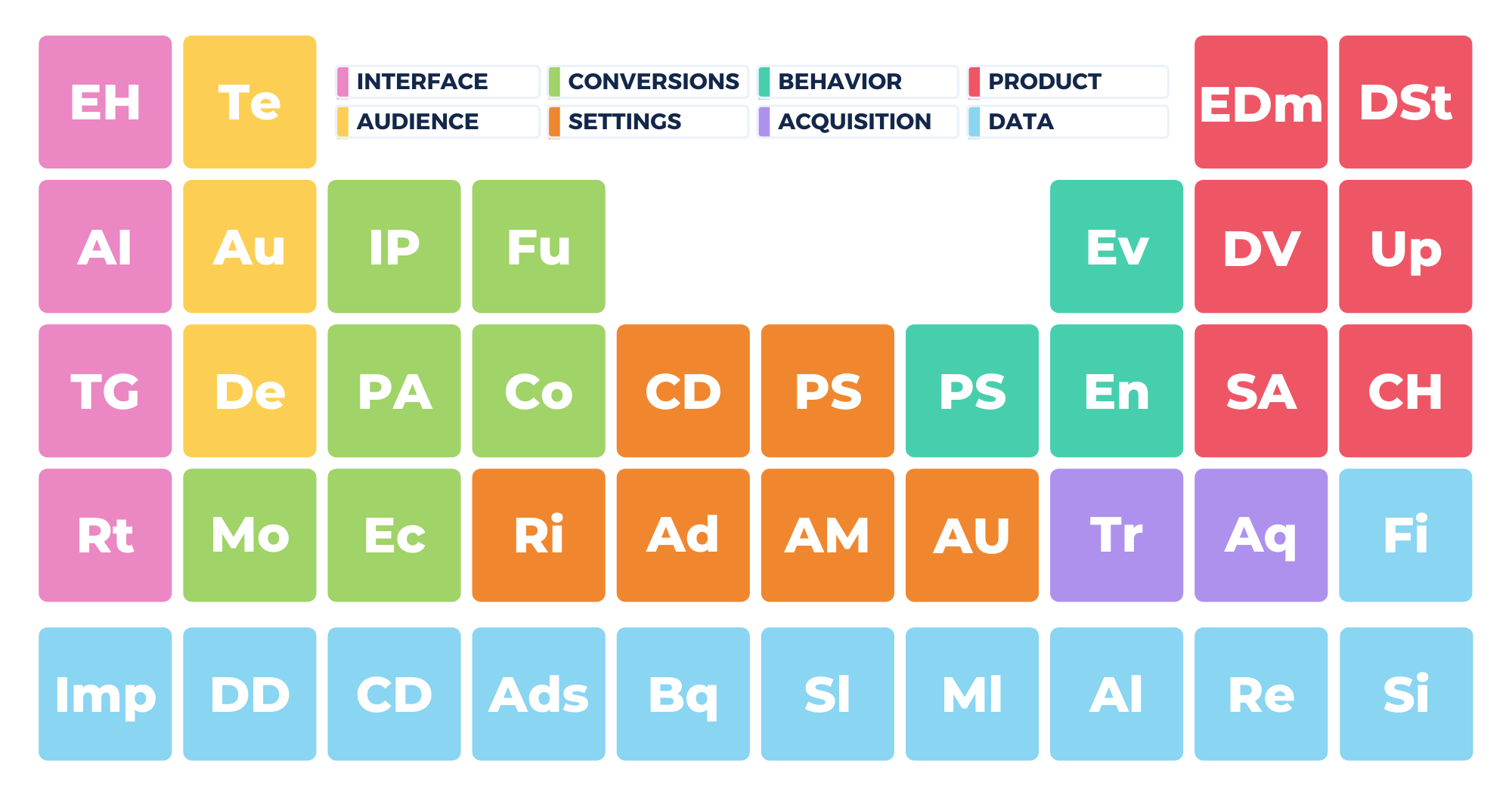
DEBUGVIEW
The best feature in GA4, hands down!

One of the most welcome additions to Google Analytics 4 is the introduction of debug view, and it’s sure to be a feature you use often.
So what is debug view in Google Analytics 4?
Debug view allows you to monitor incoming events from a specific device or browser for the purpose of troubleshooting and debugging. After enabling debug mode on your specific device, you can use the Google Analytics 4 navigation panel to view events from the specific device or browser.
Using debug mode is quite easy once you have it enabled on a device. Today, we’ll walk you through enabling debug mode on a device of your choosing and how to read your debug, real-time report in your Google Analytics interface. So come with us to learn all about using this valuable new tool.
What is Debug View?
Your debug view is a real-time report generated by Google Analytics. Using debug mode, you can monitor your events in real-time, as well as the custom parameters and user properties you’ve set. Your debug report shows data from a specific device where you have debug view enabled.
When you have your debug view enabled on a device, that data will be sent to Google Analytics in real-time without being processed first. It’s filtered out and kept separate from data coming from other devices without debug mode enabled (i.e., your normal website and mobile app users).
Normally, Google Analytics batches events together and sends them in bundles, but debug mode keeps your testing separate from the rest of your data. This means you can use debug mode for testing without skewing your metrics in the process.
How to Access Debug View
Getting to your debugger in GA4 is very easy. On the left, click “Configure.” Then click “DebugView.”

However, before you get started using your debug view, you need to enable it. You can enable your debug view in several ways, so come with us through the options in the next section.
How to Enable Debug View On A Browser Or Device
To enable debug view for your website, you have three options. You can enable the GA debugger Chrome extension, use Google Tag Manager’s preview mode, or send a debug_mode parameter along with an event. Let’s walk through each of these options:
- Using the Chrome extension: Okay, so the first and most popular way to use debug mode is with the Chrome extension, which you can access here. Once it’s installed, just click the extension’s icon to turn it on.
Now you can run tests by interacting with your website. You’ll see your activity show up in your debug view in real-time.
- Using GTM preview mode: Using GA4 along with Google Tag Manager is another way to use your debug view. All you have to do is use the preview and debug mode in GTM.
The GTM preview mode automatically adds a parameter that tells Analytics to display data coming from the browser on your selected device to be shown in debug view. To get started with Google Tag Manager, check out our previous post here.
- Setting up a custom parameter in GTM: Finally, if you don’t want to use the Chrome extension or if you have the GTM preview mode disabled, you can use a custom parameter in GTM to tell Analytics to send data to debug view.
Here, you’ll simply need to add the debug_mode parameter to the GA4 configuration tag in GTM. Set the value to “true” (no quotation marks), and then Analytics will know to send this data to your debug view.
You can also use debug mode to do testing on your mobile apps. Google has instructions to help you out there, so check out this page for further information on using debug mode.
Once you have debug mode enabled using one of the options above, you can begin your testing. We’ll discuss how to use your debug view in Analytics in our next section.
How to Use Debug View
To get started, just click on “DebugView” as we explained above. On the left, the first column you see contains a series of circles. Each one represents one of the most recent 30 minutes.
The number inside the circle shows the number of events counted for that minute. If you click on one of the circles, the next row over will show the events that were registered during that minute. This allows you to look at the events recorded minute-by-minute in detail.
When you look at the middle column, you’ll see each event in detail along with a timestamp for when the event was triggered. If you click on the event, you’ll see a list of the parameters for that event.
You’ll also see your top events listed in the top right. These are the most popular events over the last 30 minutes. You can click directly on these events and then select a specific parameter. Once you do that, you’ll see the timestamps of each parameter that was sent with the corresponding event over the last 30 minutes.
You’ll also see user properties on the bottom right. They show the current user properties for the selected device currently running debug mode. You can click on the clock icon to see changes over the past 30 minutes.
Finally, you’ll notice there is a device selector on the top. You can select which enabled device’s data you want to run through debug mode.

Once you start seeing data roll in, you can click on any event to see a list of the parameters. If there are a lot of events rolling in, especially if you have multiple people operating in debug mode, you can click anywhere in the white section of the middle column to pause the event stream. Be careful to pay attention to detail if there are multiple people using debug mode at once; it can be a little tricky finding yourself.
Also note that data is color-coded in debug mode. You’ll see events in blue, conversions in green, and user properties in orange.
Note that debug view isn’t always perfect and it can sometimes take a minute or two for your activity to appear.
How is GA4 Different and What Are The Benefits?
Debug view is new to Google Analytics 4, and it is a welcome addition. Previously, in Universal Analytics, you would check your real-time reports to monitor and verify your events, conversions, and page views, but there was other data you couldn’t debug—not until it was registered in your other reports.
But with the addition of debug view, you can look at any data coming into your Analytics account in detail in an isolated report by enabling debug mode with the Chrome extension or by using Google Tag Manager.
Another big benefit is that UA’s real-time reports only look at activity over the past 5 minutes, while debug mode looks at the last 30. You can also pause your influx of data at any time so you can take the time to conduct granular analysis.
Using Debug View in Google Analytics 4
Using your debug view in Google Analytics 4 is quite easy and will lead to valuable insights. Using the Chrome debug extension or Google Tag Manager’s preview mode or custom parameters, you can monitor activity in real-time.
Using debug mode, you can conduct tests and monitor changes after they’ve been made to your website or mobile apps. Remember, when it comes to data collection, assuming things are working correctly is a dangerous game. Your debug view lets you verify things are working as you expect, so it’s a tool you’ll definitely want to take advantage of.
How are you enjoying debug mode in GA4? Let us know!
